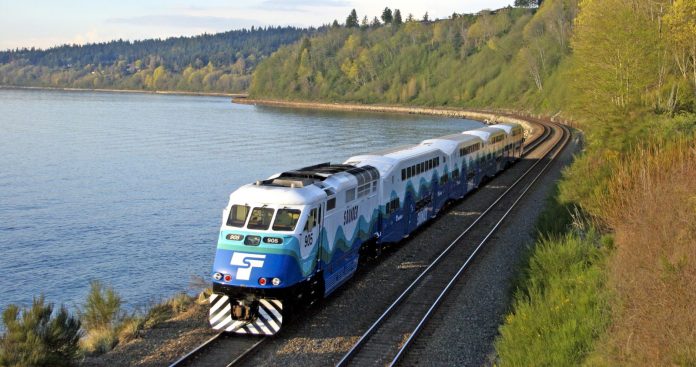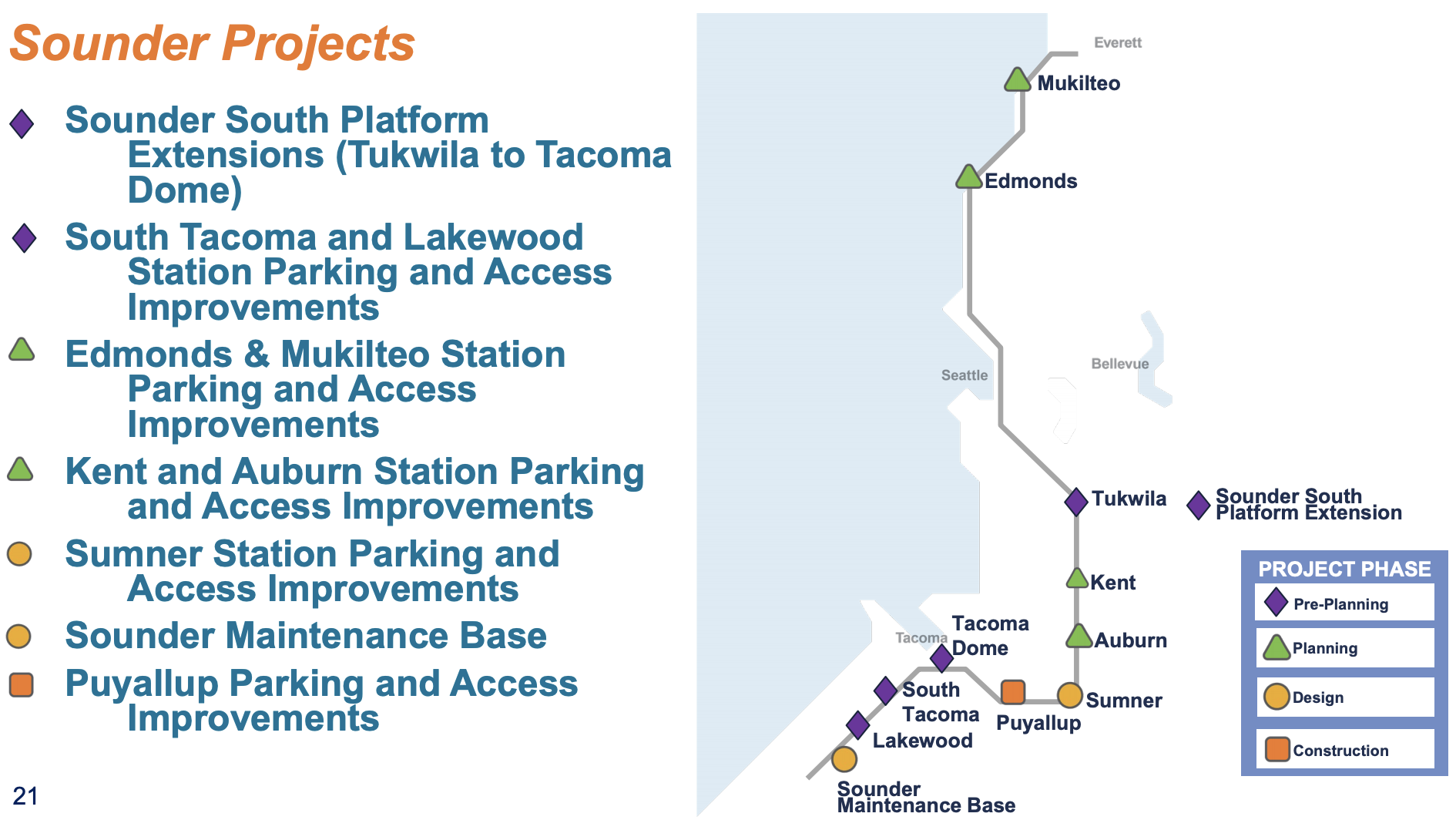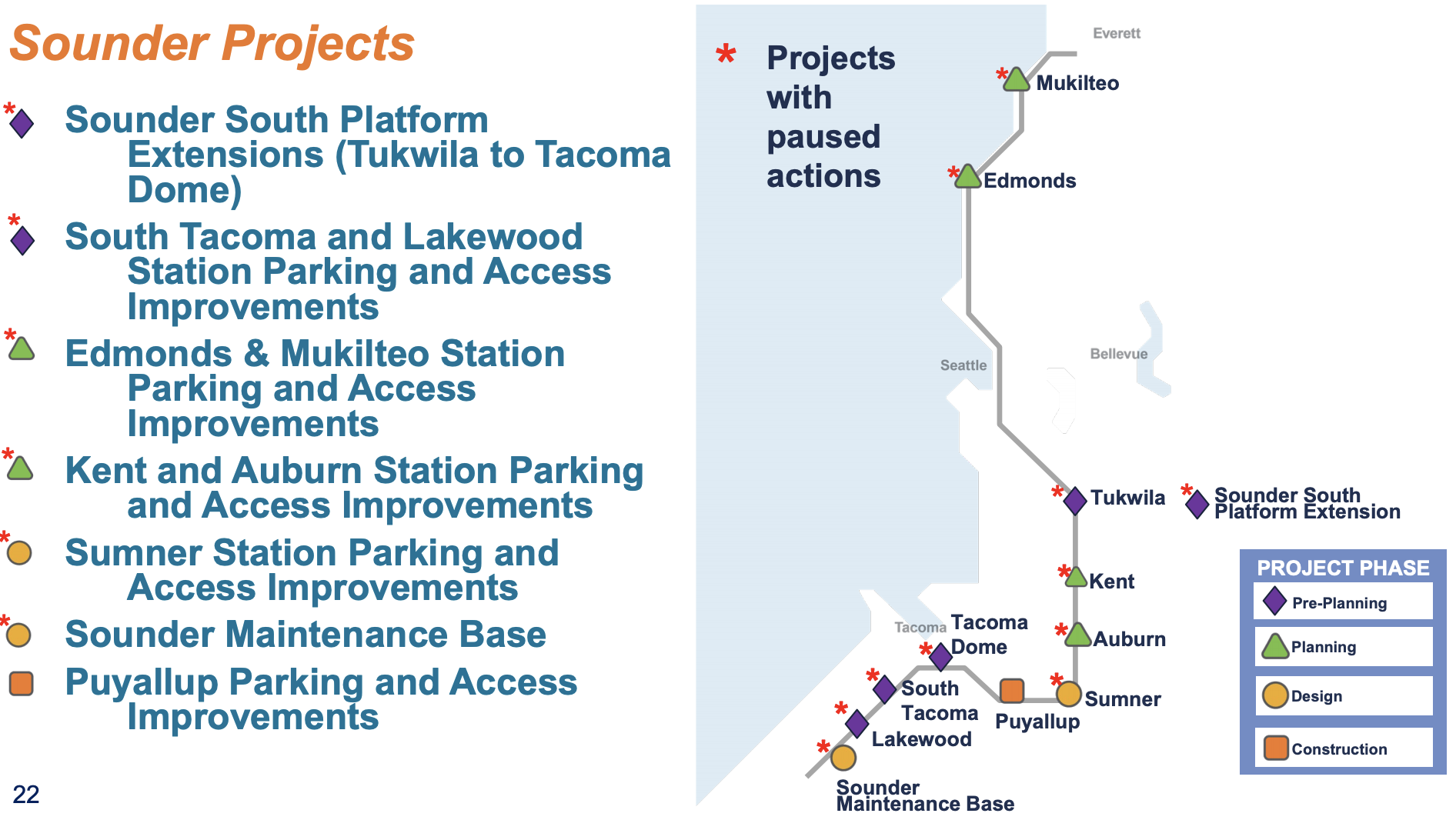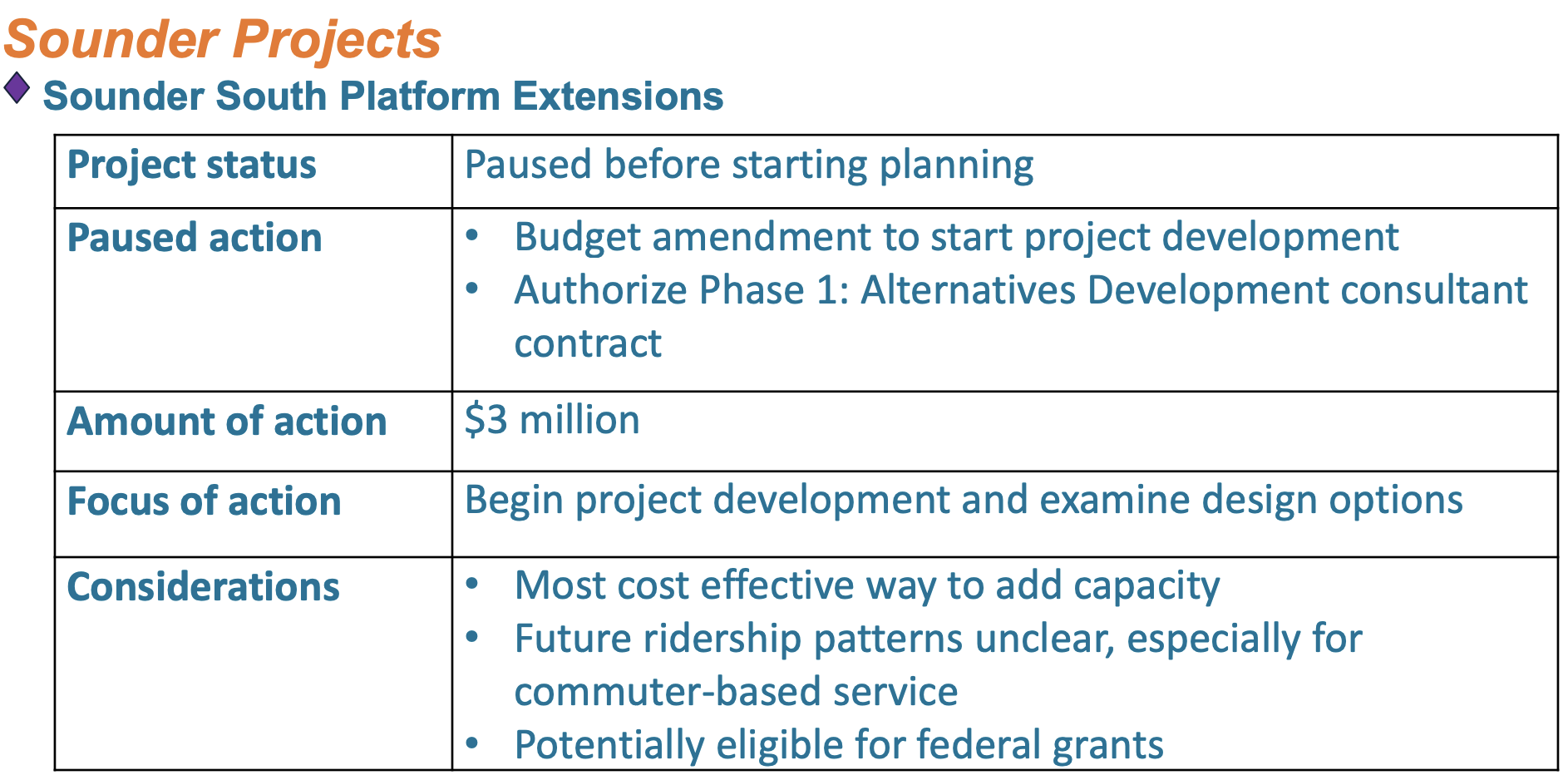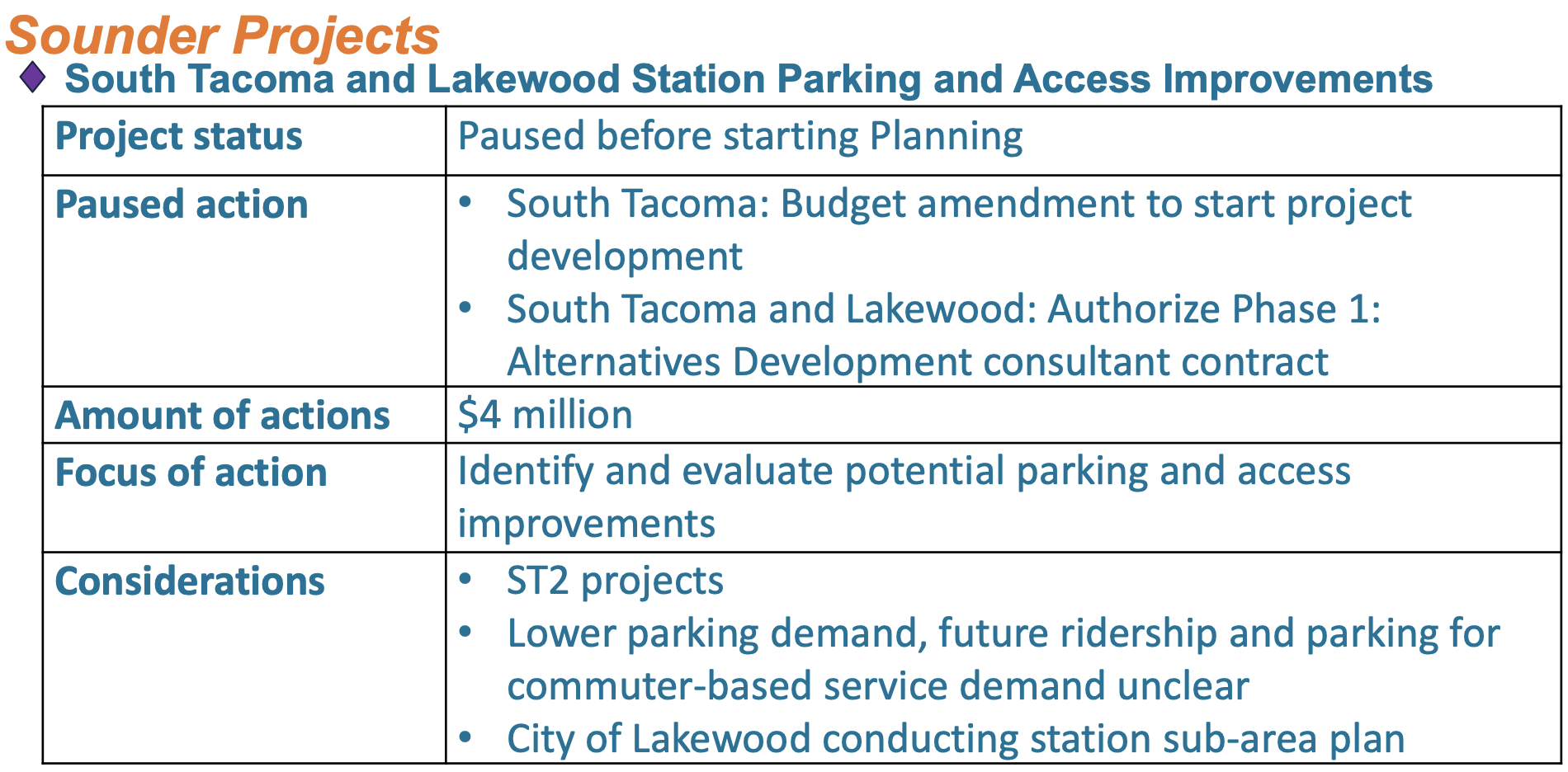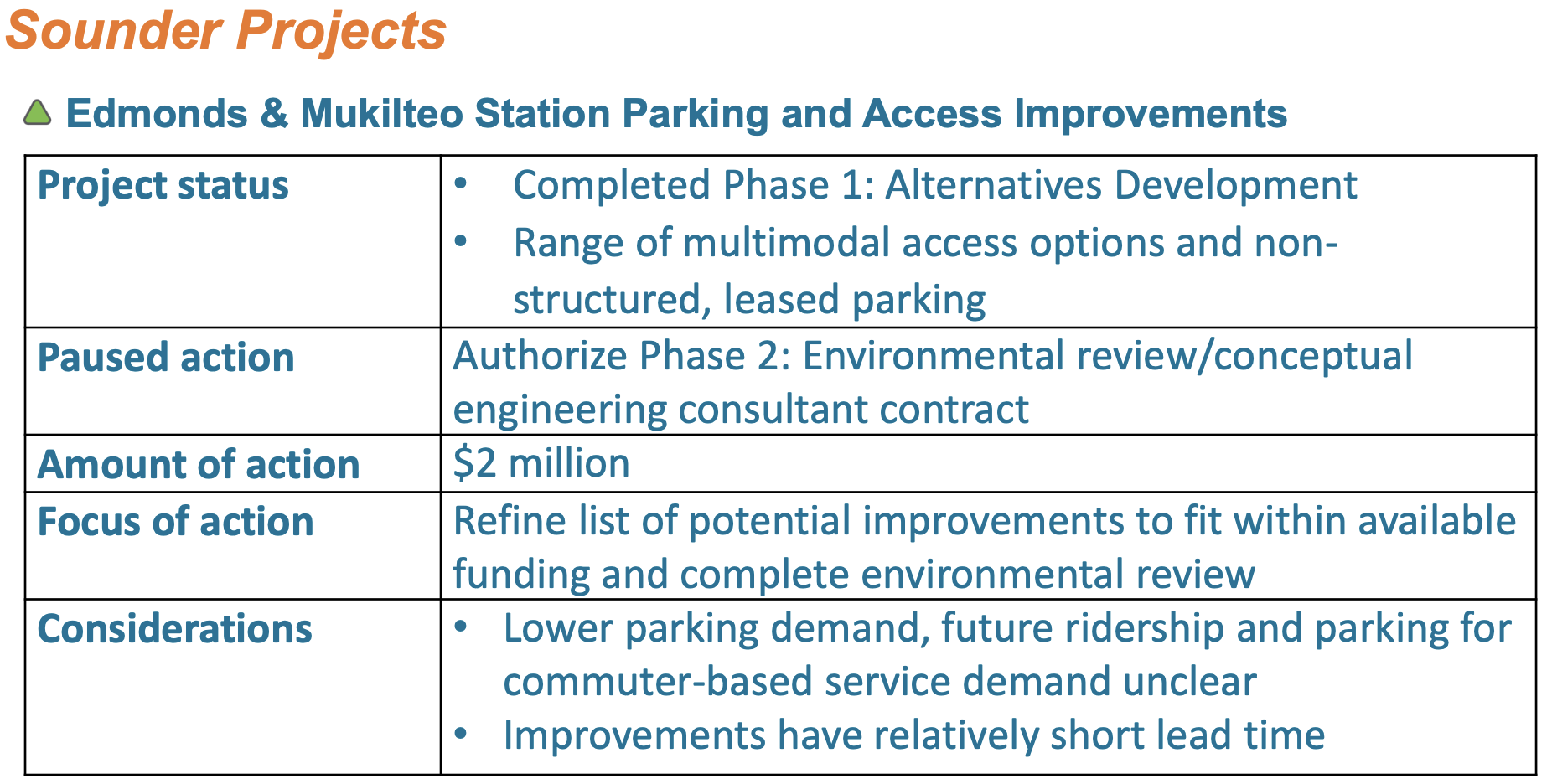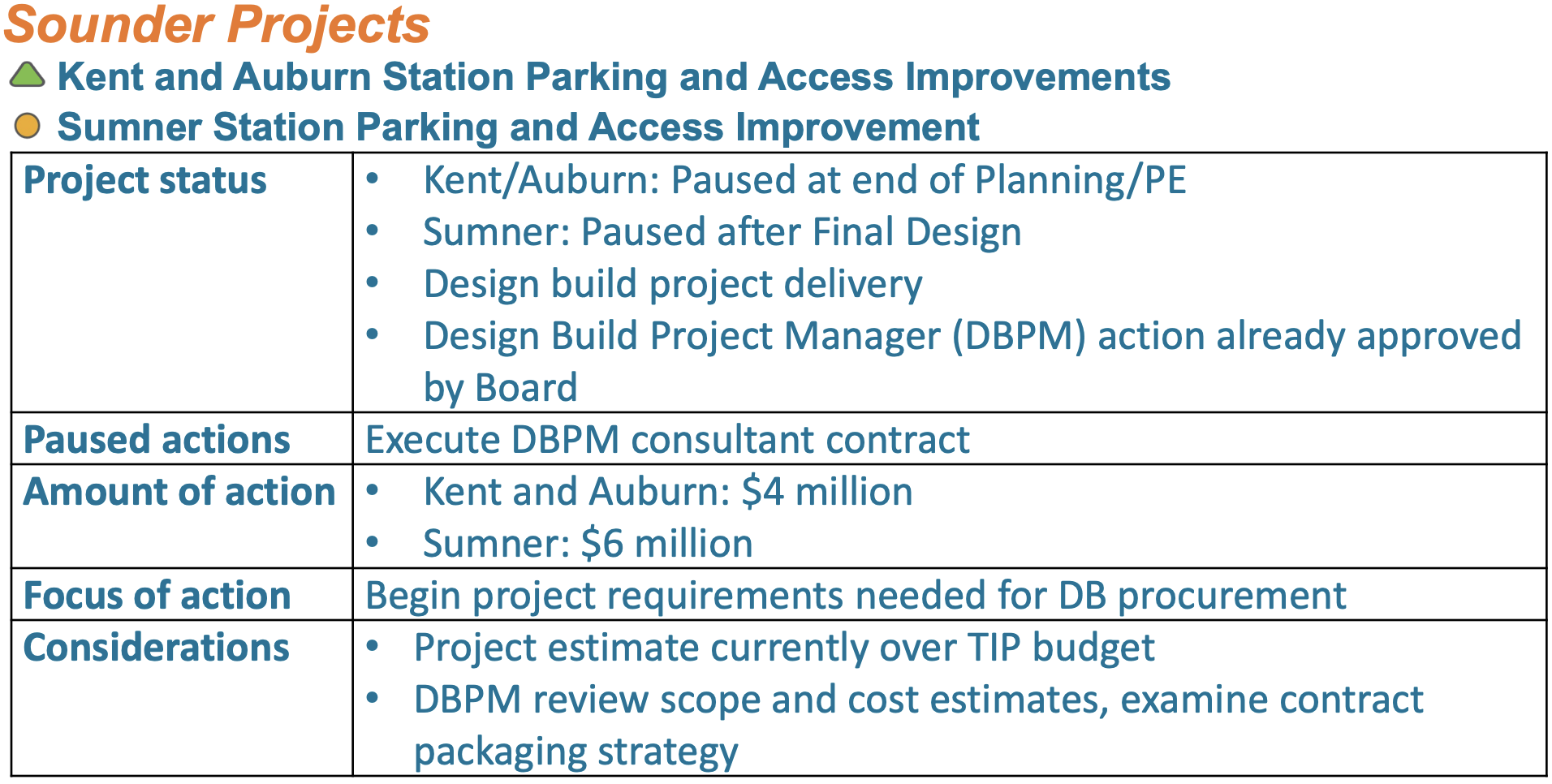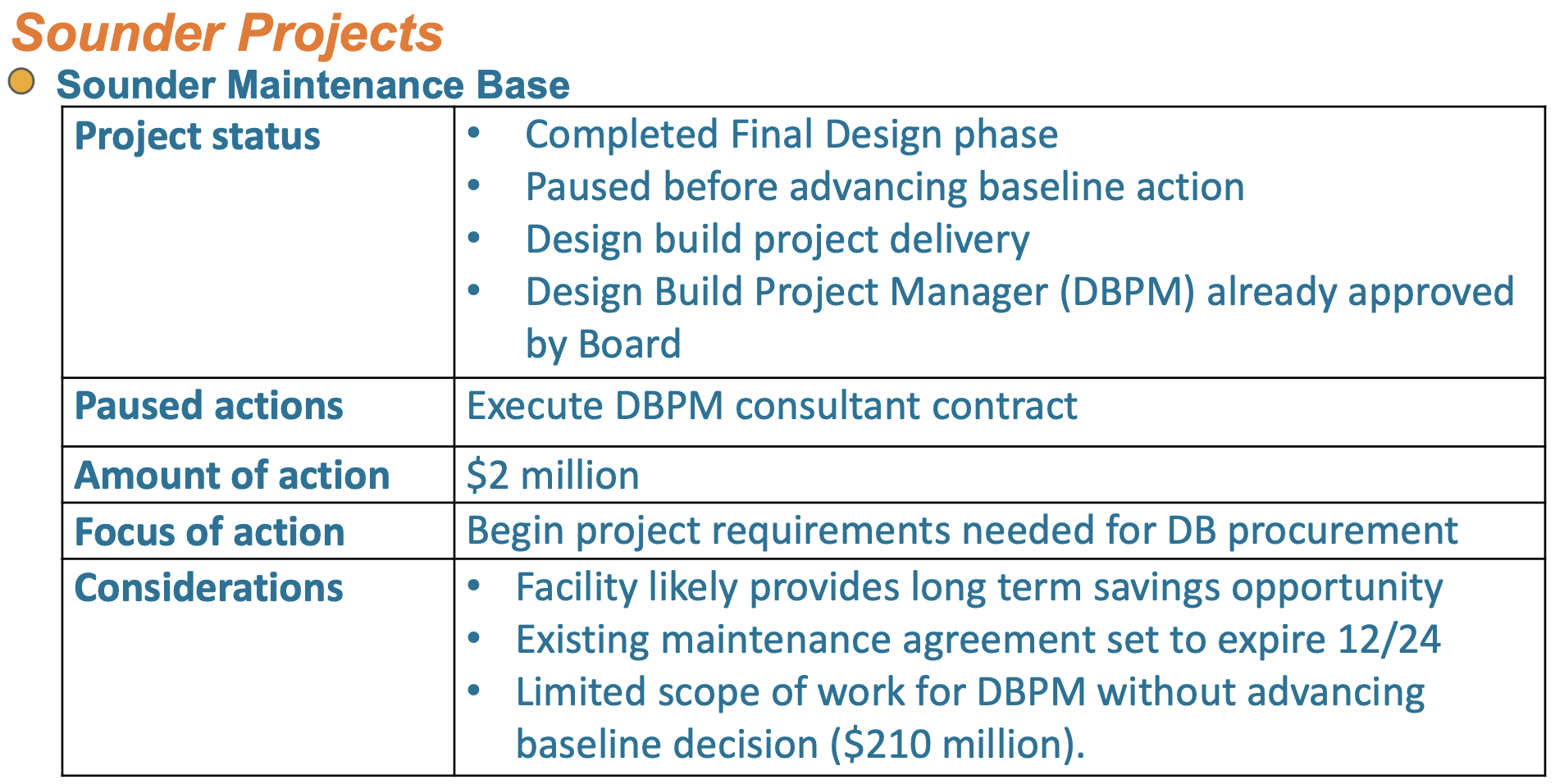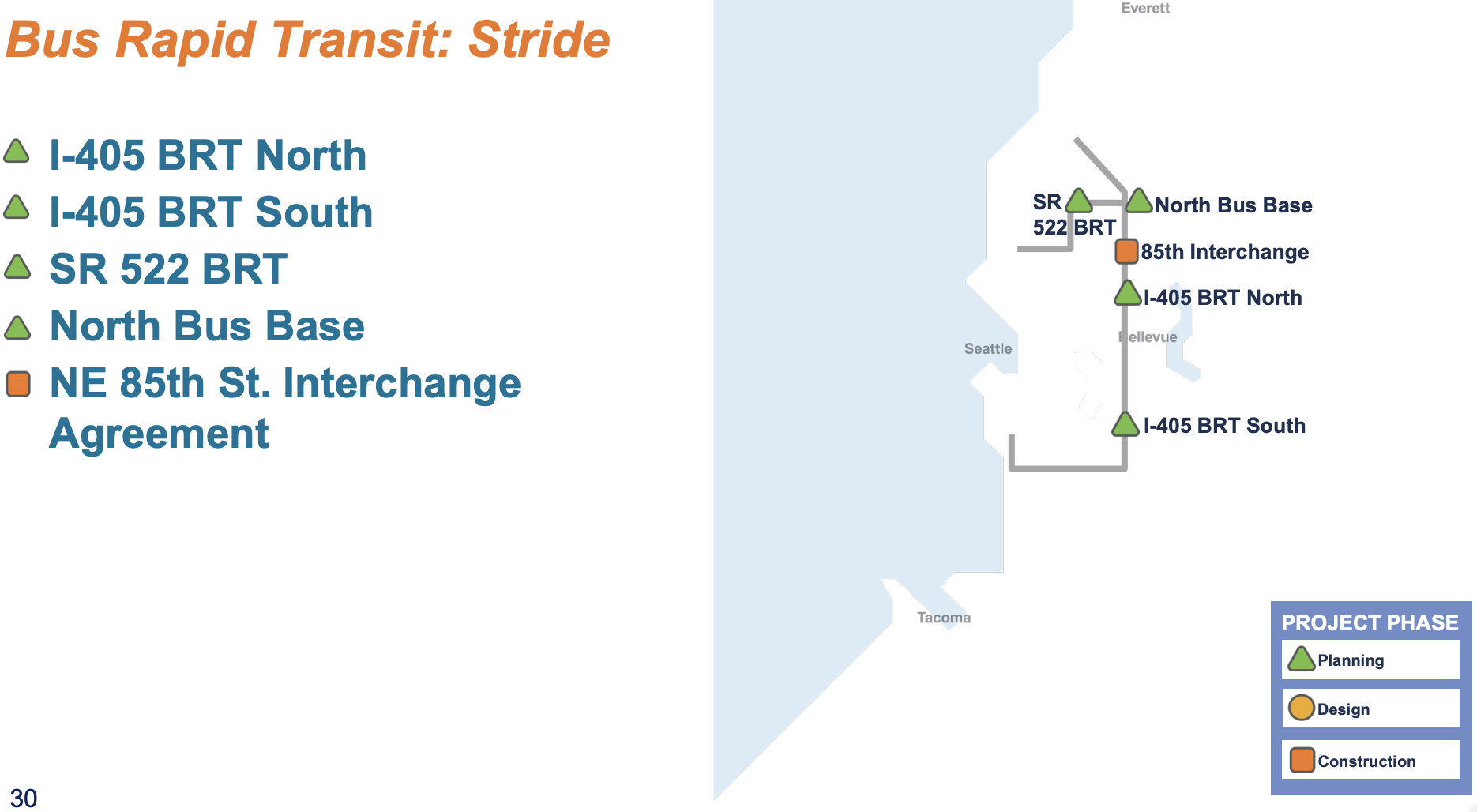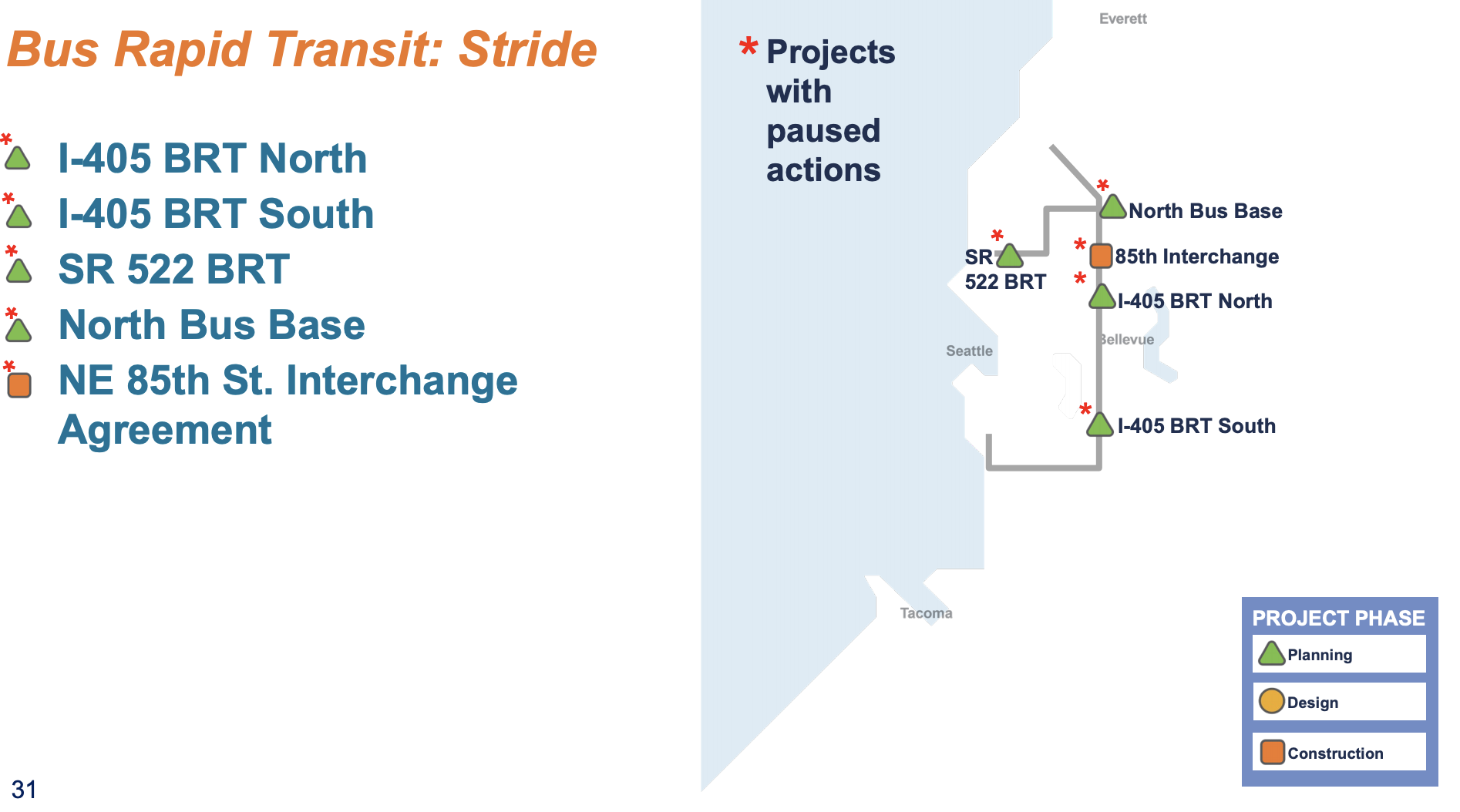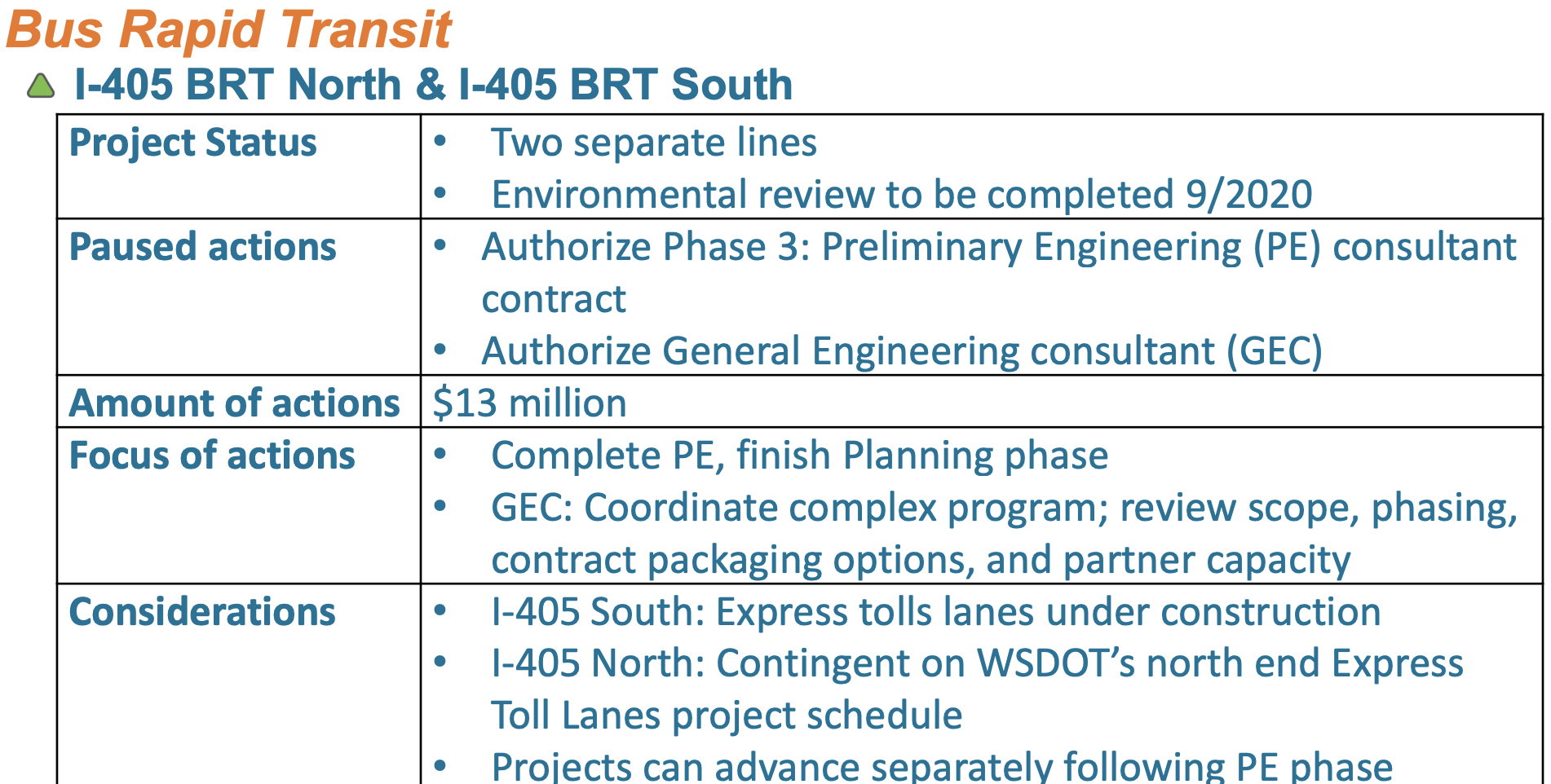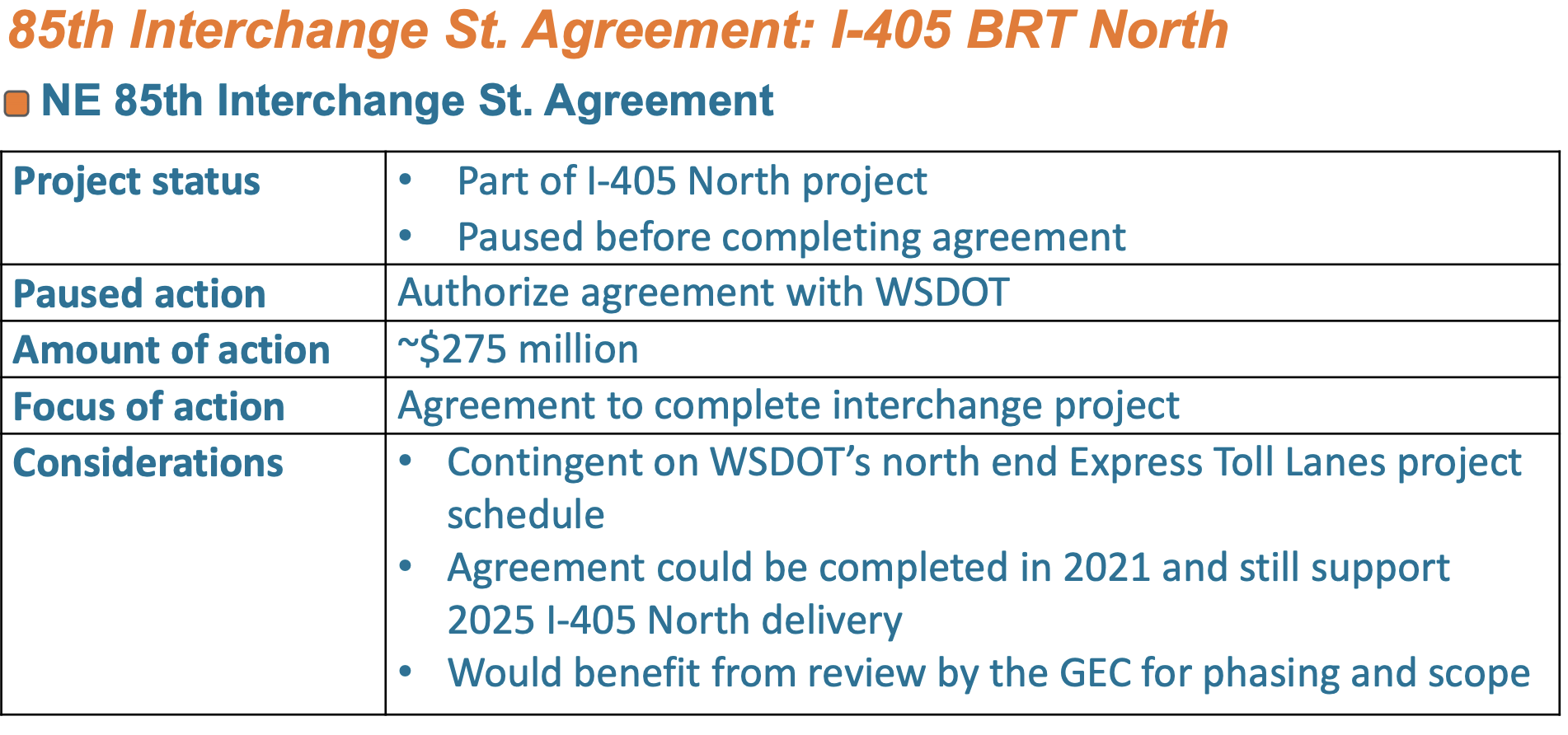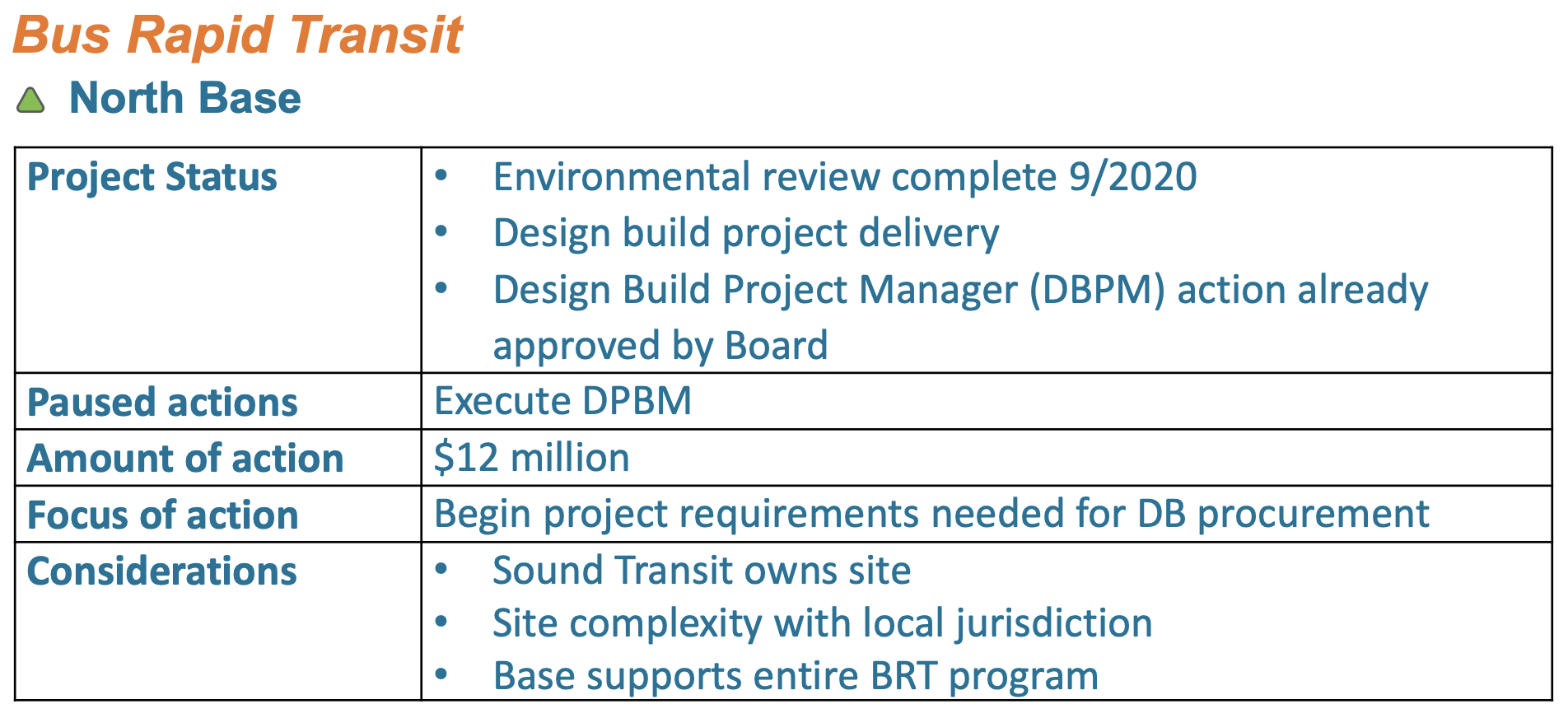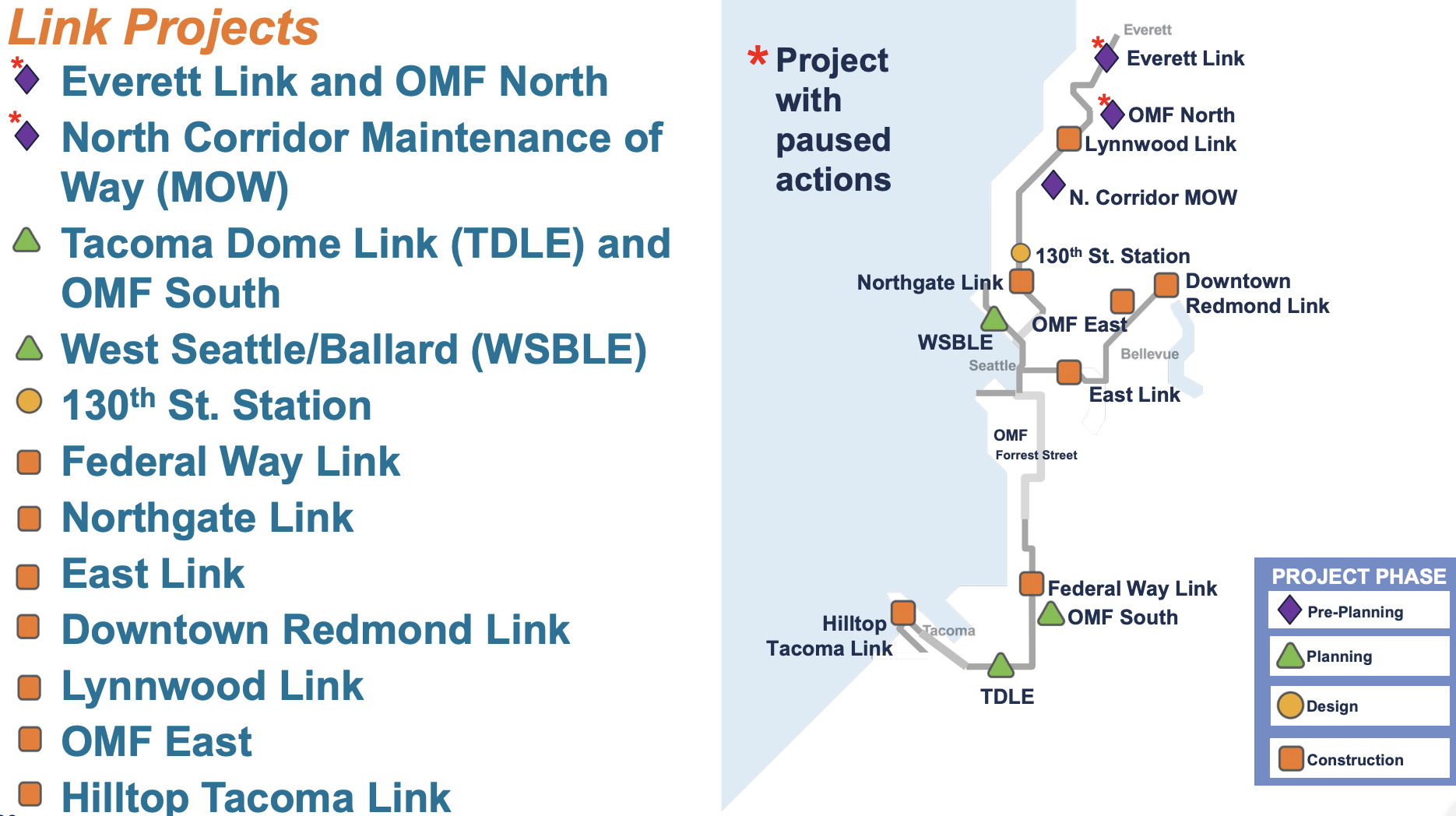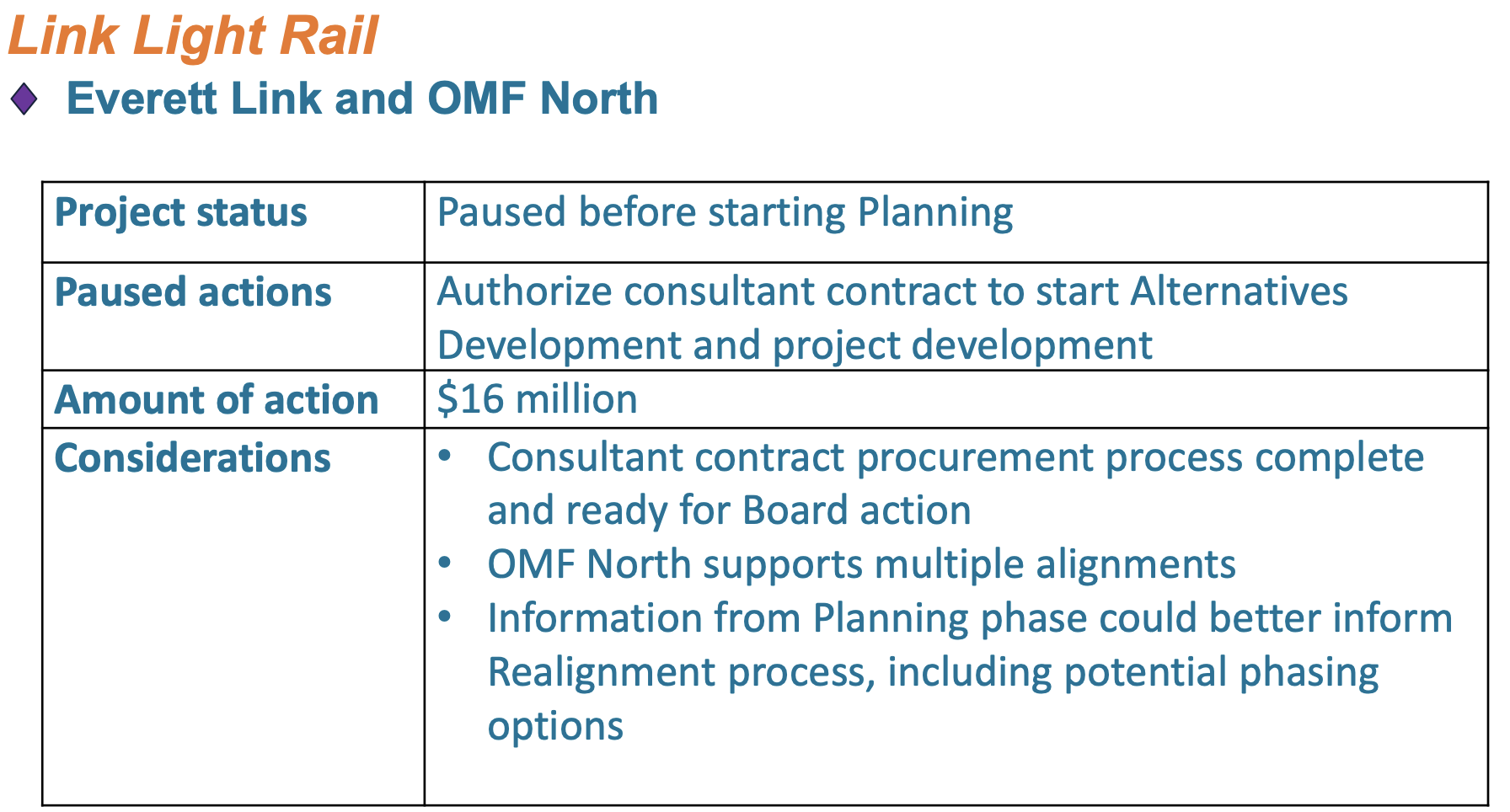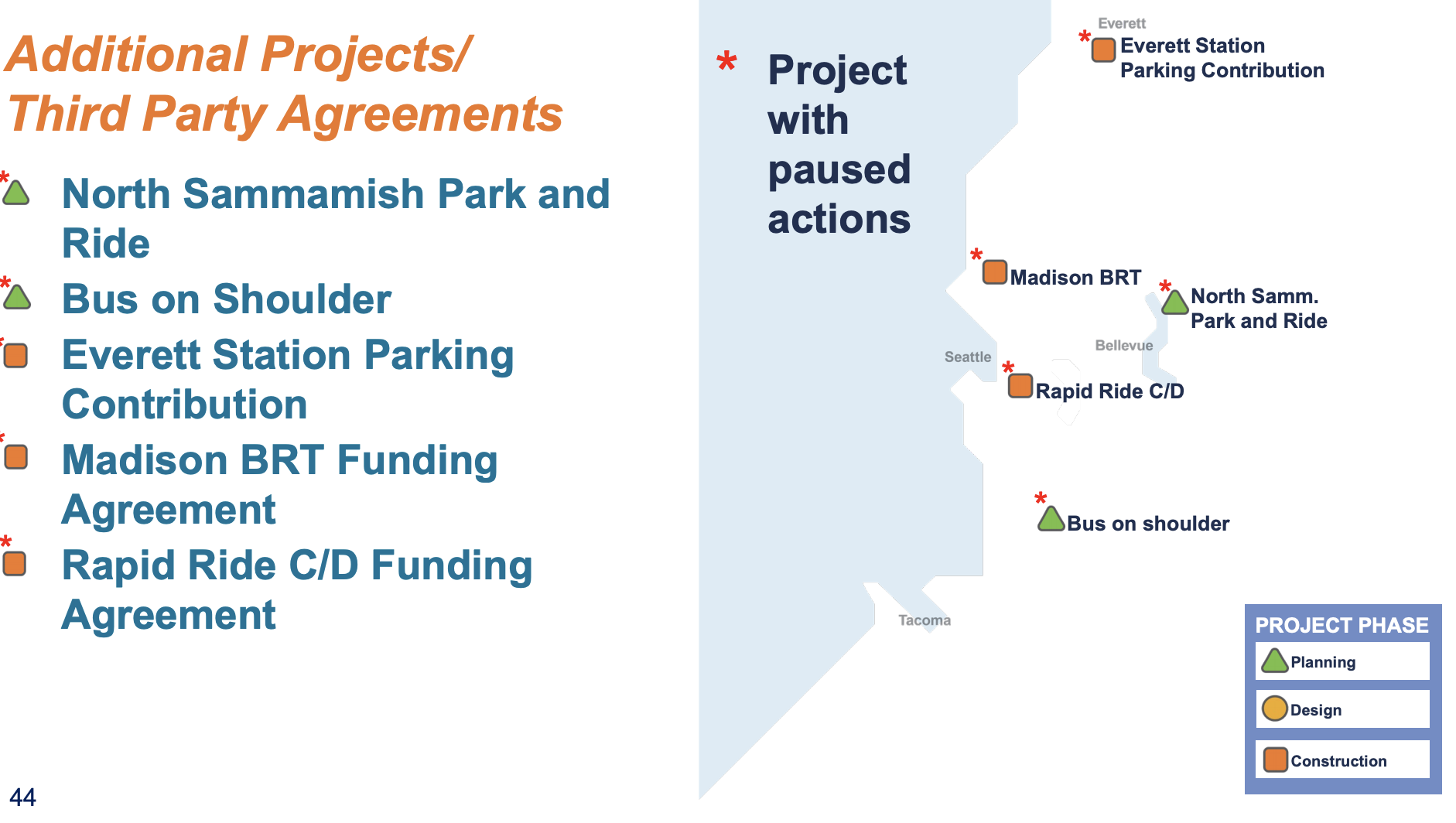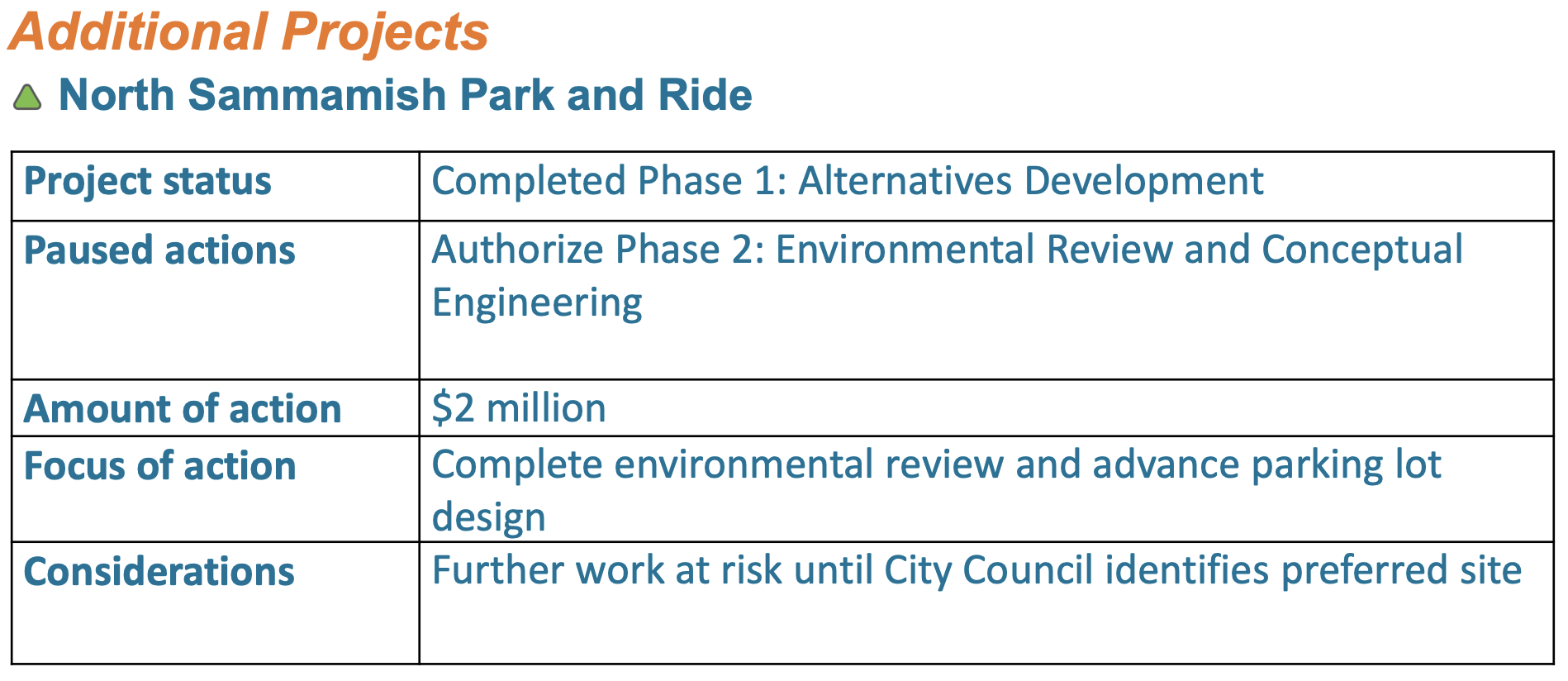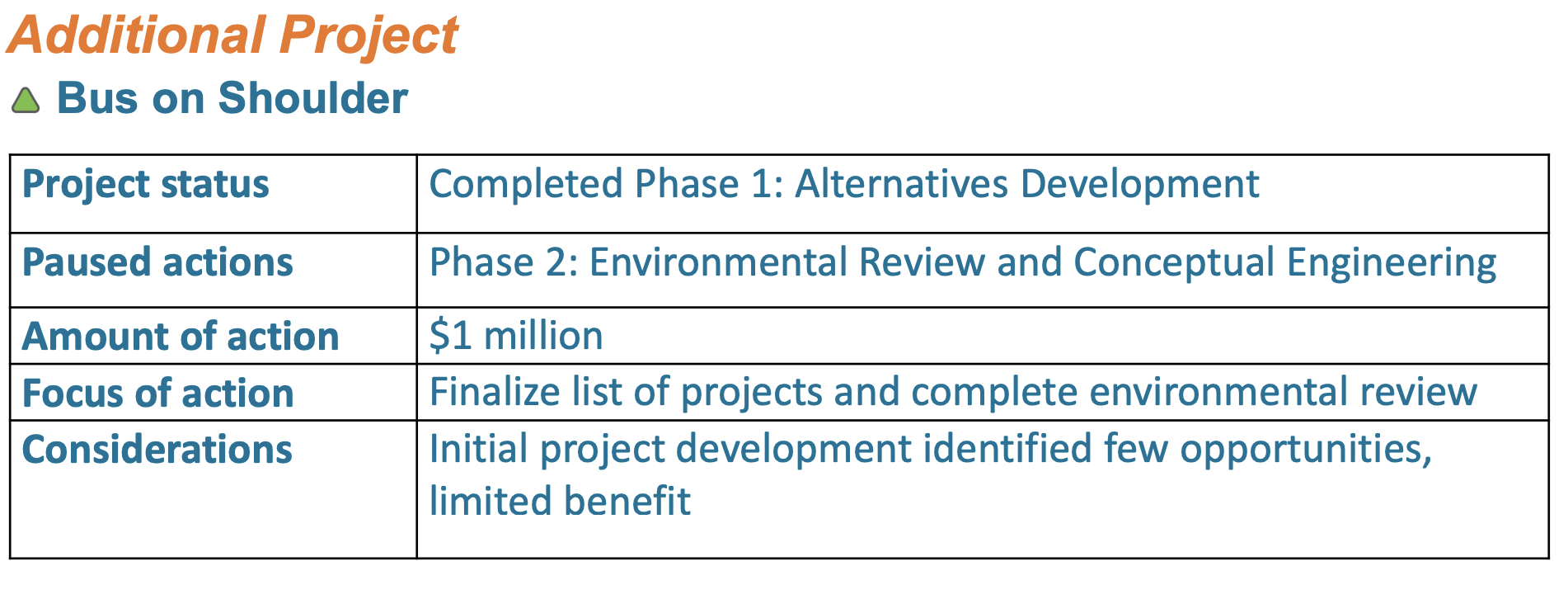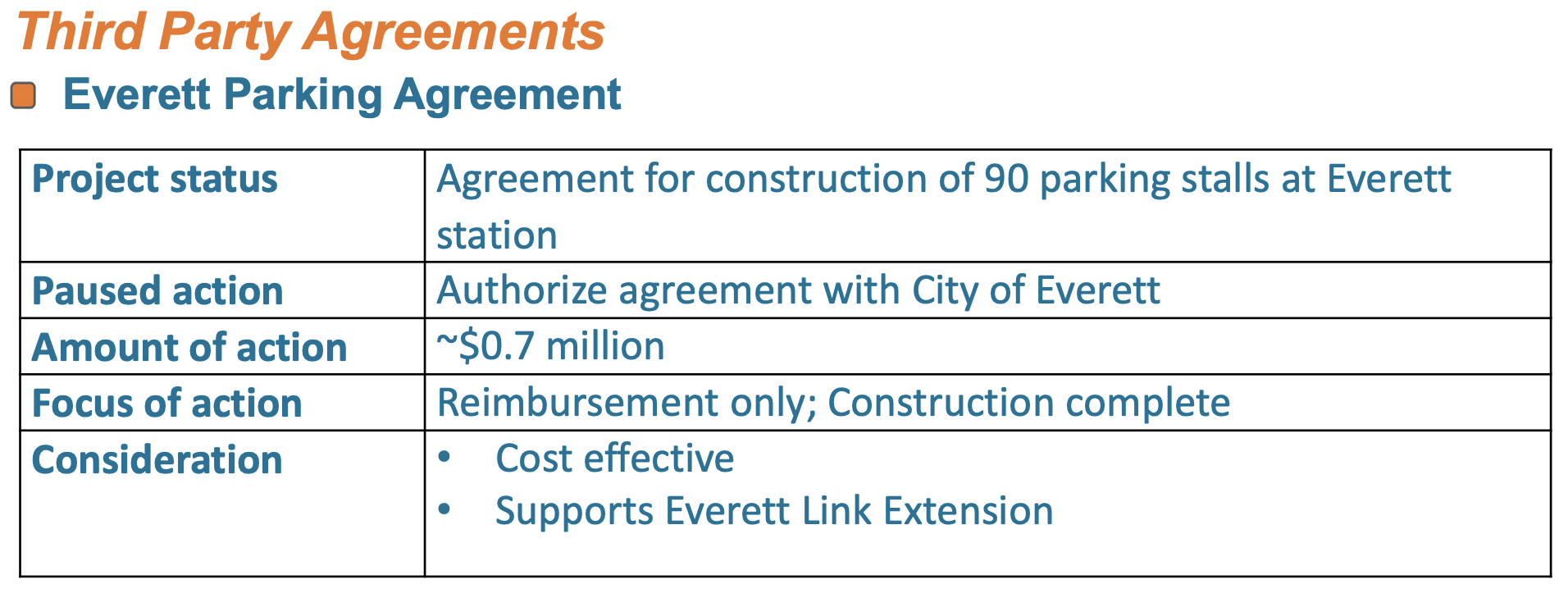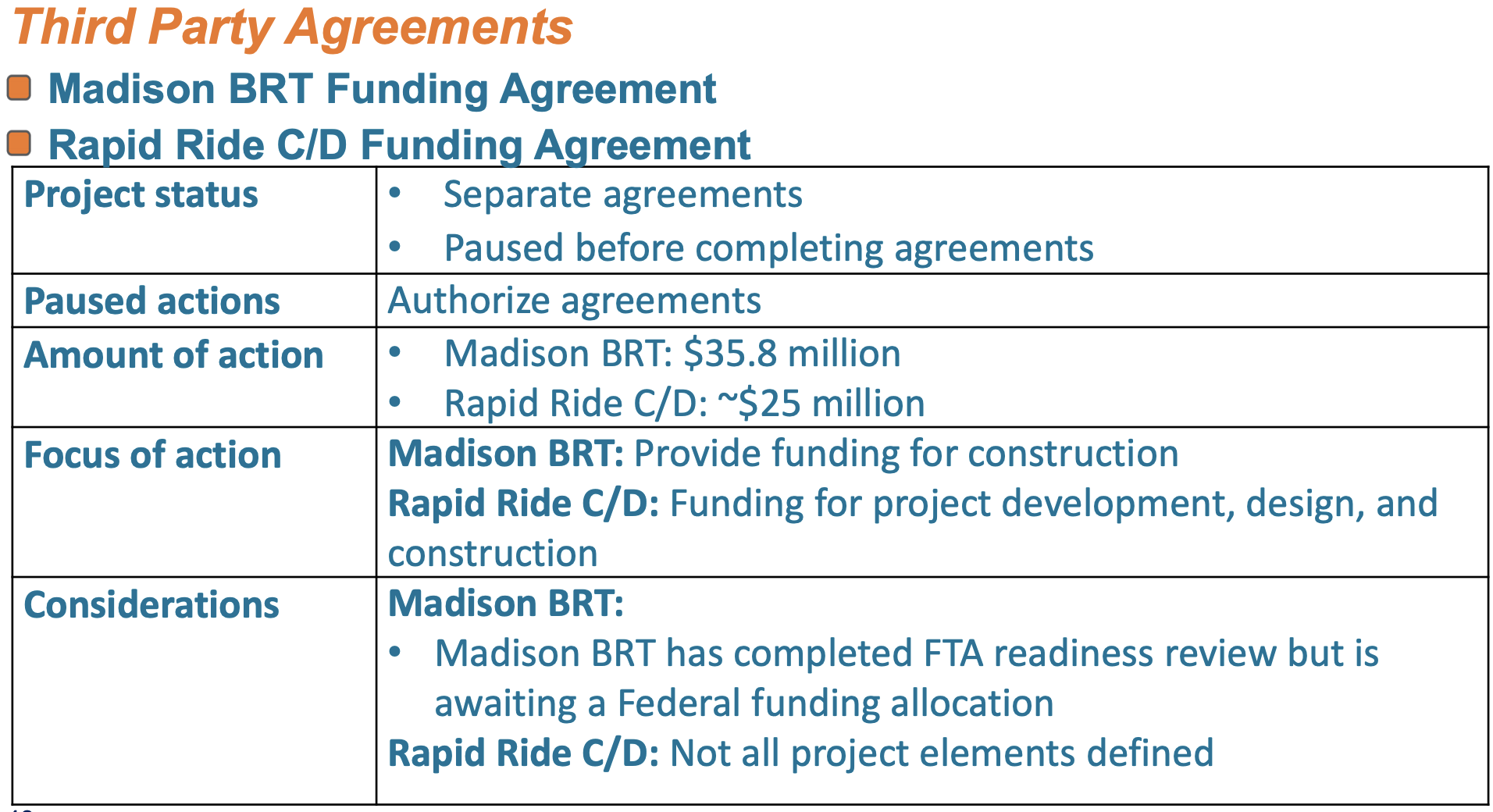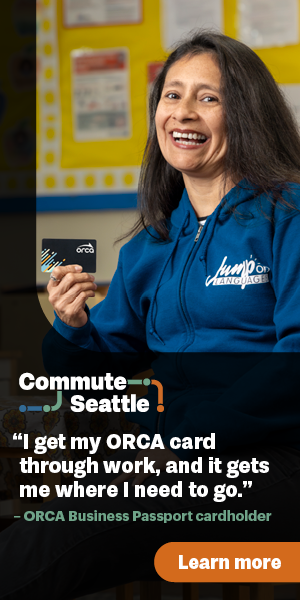On Thursday, the Sound Transit Board of Directors received a briefing on specific paused capital project actions which could become unfrozen if approved this fall. Projects that were not already at the construction phase as the pandemic hit, particularly in the Sounder commuter rail program, parking program, and Stride bus rapid transit, are facing uncertainty and the risk of delays.
Sound Transit has continued work on light rail expansion projects including Northgate Link (opening 2021), East Link (2023), Federal Way Link (2024), and Lynnwood Link (2024). Those projects seem mostly on schedule.
Thursday’s briefing comes on the heels of spring and summer discussions on what realignment of the program might look, particularly as the Puget Sound region wades through the pandemic. Questions remain what the future of commuting and travel will look like after the pandemic lifts. For now, many would-be transit riders are working primarily from home and avoiding other trips on transit. Sound Transit had delayed making any major alterations to its plan until the dust settles more.
Paused project actions and capital expansion program realignment are the result of significant revenue drops and future financing woes. By 2028, Sound Transit expects to reach the maximum debt limit and cash flow to finance projects if no realignment occurred. That would be problematic in completing and starting other projects, thus the impetus to start discussions now.
Staff did present data that showed less severe funding shortfall forecasts over the 2020-2021 period. However, the fundamentals for the long-term outlook through 2041 have not changed much. Sound Transit anticipates revenue losses totaling $11.92 billion in a severe recession scenario and a $7.14 billion deficit in a moderate recession scenario, which are similar to the spring forecast.
| Moderate Recession Scenario | 2020-2021 (Summer Forecast) | 2020-2021 (Spring Forecast) |
| Sales Tax | -$735.4 million | -$766.2 million |
| All Tax and Fare Revenues | -$822.1 million | -$908.9 million |
| Net Loss After CARES Act | -$656.1 million | -$742.9 million |
| Severe Recession Scenario | 2020-2021 (Summer Forecast) | 2020-2021 (Spring Forecast) |
| Sales Tax | -$1,000.4 million | -$976.0 million |
| All Tax and Fare Revenues | -$1,087.2 million | -$1,118.6 million |
| Net Loss After CARES Act | -$921.2 million | -$952.6 million |
In broaching the subject of paused projects and realignment, agency staff went mode by mode. Sounder commuter rail improvements were first up in the agenda with 11 paused projects at different stages of project phasing.
One of the top Sounder projects on the horizon is platform extensions on the Sounder Sound Line, which would help add capacity for trains by allowing more passenger cars per train trip. The project is stalled out in the pre-planning phasing. If it becomes unpaused, Sound Transit would begin project development and proceed to authorization of a contract for Alternatives Development and examination of design options. The scope of work is only projected to cost $3 million.
Several station parking and access projects are also stuck in the pre-planning phase or planning and design phases. South Tacoma and Lakewood are in the earliest phases while Sumner is paused at final design and ready to move toward construction. Together, these projects are pegged at $16 million in planning and design work.
The other significant project is the Sounder Maintenance Base, which is stuck in the design phase. The project is ready to move to execution of a design-build project management consultant contract for a cost of $2 million. Moving ahead so that such a facility could be constructed would save the agency in the future since the contract for the existing leased facility is set to expire in 2025.
Sound Transit staff did prognosticate that ridership impacts from teleworking were likely to be higher on the Sounder North Line than the Sounder South Line. This was chalked up to the kinds of jobs many riders in the South End have. Data shows that assumption might be right as Sounder South ridership has significantly rebounded with blue collar riders headed to jobs in the valleys and Seattle, whereas ridership up north remains low. That may mean that there is a higher priority for ridership on that corridor than the north. Meanwhile, boardmembers expressed support for the platform extensions and moving forward with the Kent and Auburn parking and station access projects.
For the Stride bus rapid transit program, staff presented five projects that have paused actions. Chief among this is the NE 85th St interchange that would provide new direct access ramps from express toll lanes on I-405. These ramps would intercept NE 85th St to offer local bus connections and freeway Stride stations. Authorization of a $275 million agreement with the Washington State Department of Transportation (WSDOT) is paused, but if approved for 2021 would still allow completion of the project in 2025.
The I-405 BRT North and I-405 BRT South projects are also paused, but at the planning phase. $13 million is needed to move forward on a Phase 3 preliminary engineering consultant contract and general engineering consultant contract. This would help wrap up preliminary engineering work and planning phase so that the project would be ready for the design phase. The other paused Stride project is the new North Base. Execution of a design-build project management consultant contract is necessary in order to begin design work. That action is anticipated to cost $12 million. All of the Stride corridor projects are ultimately dependent upon the new bus base to store and maintain buses.
For the Link light rail system, only two primary projects have paused project actions. These include the Everett Link extension and Operations and Maintenance Facility North projects. Both projects are paused in the pre-planning phase, but if unpaused would proceed to project development and Alternatives Development through consultant contracts. The combined cost, since the projects are inherently tied together, is assumed to be $16 million.
For additional projects and third-party agreements, there are five paused project actions. The most significant of these are the Madison BRT and RapidRide C and D Line funding agreements. Paused project actions would allocate about $60.8 million to advance the projects. $35.8 million would go to the Madison BRT project for construction, though the project is still awaiting formal funding allocation from the federal government. Meanwhile, $25 million would be dedicated to the RapidRide C and D Lines for project development, design, and construction.
Smaller scope projects earlier the process are also paused. The North Sammamish Park and Ride and Bus on Shoulder projects are awaiting approval to move forward with environmental review and conceptual engineering, which total $3 million.
Additionally, the Everett Station parking agreement with the City of Everett would reimburse the city for completion of 90 new parking stalls. The reimbursement agreement would only total $700,000.
Kent Keel, who chairs the board, did outline some sideboards for the third-party agreements. He said that the board should be critical of approving agreement based upon their “realness.” His point seemed to be that some third-party agreements might lack other dollars locally or federally, particularly now with funding shortfalls all over the place, and that Sound Transit should not foot the cost of third-party projects alone.
In total, the agency estimates that the paused development, design, and third-party projects represent $150 in costs or 2% the total cost of the projects, excluding the NE 85th St Interchange and Sounder Maintenance Base projects. The full cost of the capital projects, including future construction, is projected to be $7.17 billion. Proceeding with the proposed interim actions is certainly affordable, but their later stages might not be.
Later this month, the board will have an opportunity to decide which projects to consider for further action and will vote on which ones to formally advance in the fall.
Stephen is a professional urban planner in Puget Sound with a passion for sustainable, livable, and diverse cities. He is especially interested in how policies, regulations, and programs can promote positive outcomes for communities. With stints in great cities like Bellingham and Cork, Stephen currently lives in Seattle. He primarily covers land use and transportation issues and has been with The Urbanist since 2014.


